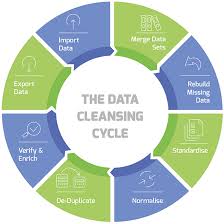If you want to flawlessly manage customer interactions and overall client relationships, you need to employ a CRM solution or Customer Relationship Management system. A CRM system or solution ensures that you stay ahead of the competition by consistently carrying out relevant interactions with both existing and prospective customers with operations and marketing activities running smoothly in the background – this is the primary objective of a CRM solution.
Businesses of any scale can benefit immensely in terms of smooth sales management, strengthened productivity, and seamless and consistent business relationships, If they integrate a consistently performing CRM system well with their existing processes and manage it effectively.
If we talk about managing a CRM database, it is a continual process that is resource extensive, high-priced, and requires skilled technicians to maintain it along with making essential modifications and updates. The significant factor is that CRM projects are basically centered on some orthe other form of data migration that finds its roots in legacy systems that are being gradually phased out with novel and digital infrastructures, and sometimes even from one CRM platform to another. This environment puts CRM Data Migration Services in the spotlight and makes it indispensable for the migration to be carried out in a testable and repeatable format for the desired outcome.
The aforementioned ideal way of executing CRM data migration can be carried out with the following TIPS –
1. Phase before CRM Data Migration
Expel and tidy up obsolete records; have a backup strategy in case of situations where you would require to restore these records; understand the new system and create a list of functions you would want to be addressed by the new CRM system; prep your teams with due training to bring them on the same page in terms of familiarisation with the new solution and prepare an integration roadmap and explain each team member its role.
2. Initial Data Quality Assessment
Make sure to check data as it enters the system and keep an eye for missing data and ensure it is added if there is any. Ensure the removal of duplicate records and maintenance of current records. Avoid governing data in silos and the usage of purposeless metrics.
3. The Key is Data Mapping
There is never enough of data analysis and testing that one can do, therefore be at it consistently. Clarify and define technology and organizational KPIs and make use of model-driven engineering to pursue all tasks.
Now whether you are carrying out Data Migration from Zoho to MS Dynamics or other platforms (or the other way around) you shouldn’t leave data migration as a retrospective action and definitely not assume that it’s going to be simple.
4. Do not forget the development of migration scripts
Are you Looking for a Data Mirgration services?
5. Test Migration without fail
6. Data Cleanse - Absolutely!
Carry out an in-depth analysis, double check the data, make use of better templates, and ascertain the cleanup time and implement it accordingly. Don’t lock down the system to avoid bad data and don’t de-duplicate without team verification.


